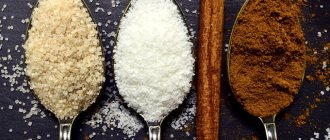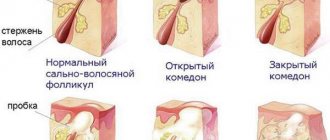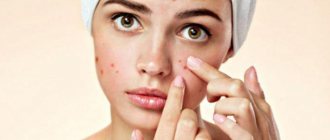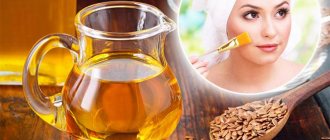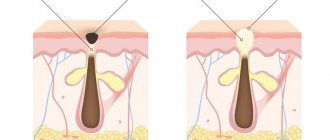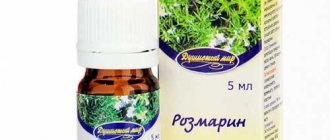On June 10, the authoritative publication Jama Dermatology published an article by French scientists from the Institute of Paris Association Between Adult Acne and Dietary Behaviors. Findings From the NutriNet-Santé Prospective Cohort Study1. Scientists analyzed data from 24 thousand participants and confirmed that fatty and sweet foods, drinks and milk - components of the Western diet - provoke rashes.
We read and tell therapeutic stories of a systematic approach to therapy, next up is the scientific debunking of myths about gluten and lactose in patients with acne .
Effect of the drug
In short, the substance Omega-3, which is contained in large quantities in fish oil, saves you from acne. These are fatty acids that are great for acne. Omega-3 not only fights acne, they generally reduce inflammation and stimulate skin regeneration in all kinds of skin diseases.
Inflammation is the most active causative agent of acne. So, to properly get rid of acne, you must take fish oil. But before you go to the pharmacy for a magic drug, it is worth studying in detail all the pros and cons. There are cases when the use of fish oil, that is, cod liver oil or any other marine oil, is harmful to the body.
Why do researchers believe that omega-3 and 6 should be included in the diet of acne sufferers?
Omega-3s have been found to prevent many diseases, including inflammatory reactions in the skin21. They inhibit the action of several cytokines.
Omega-6s have the opposite properties of omega-3s and change the physiological state to a pro-inflammatory state with increased production of inflammatory LTs, PGs and cytokines.
But scientists are not maximalists, and cannot divide omega-3 into “good” and “bad”. The main thing is their correct ratio.
There is promising research into combination supplements that show the greatest potential for reducing inflammation in skin conditions such as atopic dermatitis, psoriasis, and acne22.
A well-balanced omega-3/omega-6 ratio is found in the Mediterranean diet.
Additional polyunsaturated fatty acid supplements have improved overall skin condition in some cases.
In the right ratio, omega-3s can inhibit inflammation and suppress genes associated with lipid metabolism23. They interact with lipid peroxidation products and inflammatory cytokines and Toll-like receptors, components of the body's immune response that are activated in patients with acne.
Rubin et al. in the study, acne patients were given dietary supplements four times daily consisting of 250 mg EPA derived from sardines and anchovies, 3.75 mg zinc gluconate, 50 mcg selenium, 50 mcg chromium, and 50 mg EGCG from green tea extract. After two months, four out of five patients showed a reduction in inflammatory lesions24.
Khayef et al. studied 13 men with acne who consumed three fish oil capsules daily for 12 weeks (930 mg EPA, 720 mg DHA, and 174 mg DPA). Eight patients experienced clinical improvement25.
Jung JY at al. conducted a randomized, double-blind, prospective study in which 45 patients took part. Patients were divided into three groups, including an omega-3 group (2000 mg per day) and a GLA group (borage oil, 400 mg per day) and a no-treatment control. After ten weeks, a significant reduction in the mean number of inflammatory and non-inflammatory elements was observed in the omega-3 and GLA groups26.
Experimental results
Not all scientific studies have produced the same results. Some say that taking fish oil reduces the appearance of inflamed acne by forty percent and non-inflamed acne by twenty percent.
Other experts say that fish oil helps with acne in cases where the acne disease is in a moderate or severe stage, but the remedy is not effective for mild acne.
All experiments clearly confirm one thing: the drug helps well with inflamed acne, which most often appears due to hormonal imbalances in the female body. These problems are usually associated with premenstrual breakouts and the period itself.
Side effects and contraindications
The main contraindication is individual intolerance to fish oil, which is extremely rare.
Today, fish oil undergoes serious purification and control, so that the presence of any harmful impurities in it is 100% excluded.
Thousands of buyers throughout Russia testify to the quality and safety of Biafishenol products, because the company has been operating for more than 20 years. So, by using Biafishenol fish oil according to the instructions, you will get results that will definitely please you.
It is recommended to consult a specialist before consuming fish oil.
How fish oil works
As mentioned above, the preparation is very high in Omega-3 fatty acids, especially EPA and DHA. It is these substances that interact perfectly with Omega-6 acids. This reaction eliminates the inflammatory process in the body.
Inflamed acne appears when a person’s diet has an incorrect ratio of two fatty acids. Acne appears when there is an excess of Omega-6 and a lack of Omega-3.
This is why doctors have been recommending fish oil for many years to maintain a balance between Omega-3 and Omega-6 to relieve inflammation.
Cod liver oil, which everyone is accustomed to calling fish oil, is also rich in vitamin A, which also helps prevent acne.
How sebum formation and inflammation occur
Some studies have linked the severity of rashes to changes in the proportion of monounsaturated fatty acids. With acne, the ratio of triglycerides and wax esters on the skin surface increases, which leads to a disruption in the composition of sebum and to its overproduction4. Changes in the composition of sebum also occur due to improper synthesis of lipids in the sebaceous gland. Among the lipids presumably involved in the formation of comedones, the products of their peroxidation are under close attention.
A recent study showed that the accumulation of lipid peroxides may cause the transition of non-inflammatory comedones to inflammatory ones5. In particular, it was noted that the degree of lipid peroxidation, as well as the content of interleukin IL-1-alpha and NF-kappa-B in inflammatory comedones is higher than in non-inflammatory comedones.
Another component is involved in the process of sebogenesis - squalene 6. It is considered as a marker of sebocyte differentiation. The accumulation of squalene is due to the specific environment of the sebaceous glands - an anaerobic state, which affects the activity of enzymes in cells. Thus, squalene-2,3-epoxidase requires oxygen to carry out its reaction. If the activity of this enzyme increases in sebocytes, the amount of squalene also increases7. Squalene peroxide, a byproduct of lipid peroxidation, has been found to play a critical role in the development of comedogenesis and inflammation.
It increases the amount of inflammatory cytokines (IL-1 alpha) and activates PPARs receptors (PPARα) in keratinocytes, Langerhans cells and melanocytes. Oxidized squalenes also increase 5-LOX activity and induce the COX-2 signaling pathway. This leads to increased release of pro-inflammatory cytokines and increased lipid peroxidation. Cells literally start going crazy, triggering an inflammatory response8.
Recent discoveries have demonstrated the importance of Toll-like receptors and the inflammatory mediator leukotriene B4 LTB4 in modulating the immune response. They are present in keratinocytes, monocytes and sebocytes9.
Sebum mediates proliferation of Propionibacterium acnes
.
Sebaceous glands and lipids provide an anaerobic environment for their growth. As sebum passes through the follicular duct, lipases produced by Propionibacterium acnes
hydrolyze triglycerides into pro-inflammatory free fatty acids10.
Propionibacterium acnes
also binds Toll-like receptors (TLR2 and TLR4) on sebaceous glands to stimulate sebocyte production of antimicrobial peptides (HβD1 and HβD2) and inflammatory cytokines (FHO-alpha, IL-1-alpha; IL-8)11.
When is fish oil useful?
Research conducted by scientists from Korea has proven that the substance Omega-3 or gamma-linolenic acid (GLA) eliminates inflamed acne by forty or even fifty percent.
Since the hormonal imbalances that cause acne are similar to those that provoke polycystic ovary syndrome, we can say with absolute certainty that this disease can also be treated with cod liver oil. And if you consider that acne often appears in this case, then in this situation, fish oil will help against acne on the face.
Omega-3 overdose, consequences
An acid overdose occurs due to ignoring medical recommendations or uncontrolled use of the drug. Occurs in cases of consumption of large doses of seafood simultaneously with synthetic forms of omega. Manifested by symptoms:
- lack of appetite, nausea, vomiting that does not bring relief;
- feeling of unquenchable thirst;
- urge to urinate frequently;
- headache;
- pain in the epigastric region;
- hypertension;
- muscle weakness;
- bowel disorder - diarrhea or constipation.
There is no reliable information about cases of use of lethal doses. Theoretical studies say that exceeding 1.5 - 2.5 million IU can cause a fatal reaction. If anyone knows information about this, please let me know.
Who is recommended cod liver oil for acne?
Based on reviews of fish oil for acne, one can judge that this drug does not help in all situations:
- You should supplement your daily diet with cod liver oil if you have a moderate amount of inflamed acne on your body. Here all the experts unanimously say that the substance will definitely help.
- But in the presence of blackheads and small pimples on the face, the effectiveness of fish oil has not been confirmed by anyone. Although you can try, it's unlikely to cause any harm.
- If a small acne rash is associated with hormonal imbalances in the female body, then fish oil for acne will definitely help.
- When acne is associated with polycystic disease or menstrual problems, then fish oil is just a godsend, its use is mandatory. The required amount of Omega-3 is one thousand milligrams per day.
You can take fish oil capsules for acne, or you can simply include foods such as flax seeds, eggs, cod liver and fatty fish such as salmon in your diet.
Acne - a disease of Western civilization
A number of studies have found that Inuit, Okinawans, and other indigenous peoples experience acne very rarely15. Scientists have suggested that this is due to their diet and habits. These peoples traditionally consume a lot of seafood, and when these population groups began to move to a modern lifestyle with its temptations, they moved, changing their usual food, the number of comedones and inflammatory elements on their faces increased.
In 1961, a study was conducted among thousands of teenagers in North Carolina (USA). It showed that those who consumed a lot of fish and seafood were less likely to suffer from acne16. Similar data were obtained from Asians. Jung JJ et al., in a study of Korean patients, found that participants with acne consumed less fish and more Western foods considered unhealthy17. Italians have also proven the benefits of seafood18.
Western foods have a low ratio of omega-3 to omega-6 fatty acids19. The standard Western diet contains almost ten times the omega-6 content of omega-320.
Is it possible to have a reverse reaction to the drug?
In December 2012, a study was conducted at California Polytechnic University on the effectiveness of fish oil. Thirteen people with obvious inflamed acne took part in the experiment. They were given three grams of fish oil every day.
After three months, eight participants had noticeably improved scores, but in the remaining four, acne began to progress. It is worth noting that seven out of eight people with good results had moderate or severe disease. But three out of four subjects with negative results, on the contrary, suffered from a mild or small rash.
The results were quite mixed, and research in this area continues to this day.
Brief conclusions
- Currently, fish oil, which contains Omega-3 fatty acids, is the only dietary supplement whose benefits for acne inflammation have been scientifically proven.
- Numerous experiments have shown that the drug is useful for those with severe acne. Most often it is prescribed to women whose acne is caused by age-related hormonal imbalances.
- Will fish oil help with acne? It all depends on the degree of the disease and the factors that provoked it.
Based on reviews of fish oil for acne on the face, one can judge that it is used not only internally, but also as an external remedy.
Lemon juice with fish oil
This mask is suitable for those with oily skin, as it dries it to the required level. This reduces skin moisture. If you regularly use this composition as a mask, then after three or four procedures the result will be quite noticeable. The only thing is that it is advisable to do this mask no more than twice a week.
- Pour a teaspoon of fish oil into a small bowl and add lemon juice squeezed from half the fruit.
- Mix everything well.
- Gently apply the mixture to your face and leave until completely dry. This will take about ten minutes.
- Wash off the mask with warm water.
If after the procedure the skin seems very dry and tight, then next time you should diversify the composition with a teaspoon of heavy cream.
Fish oil with honey
This mask will help make your skin more elastic. It is suitable for older women who develop not only facial wrinkles, but also age-related ones. Although young girls can do it for prevention purposes:
- Pour hot boiled water into a convenient bowl (one tablespoon is enough).
- A teaspoon of cod liver oil is also sent there.
- Honey is added last. You will also need a teaspoon of it.
- Mix everything thoroughly and apply the composition to your face.
- You need to keep this mask on your skin for fifteen minutes, and then rinse it off with cool water.
To treat acne, a mask of honey and oatmeal is often used; these two products help normalize the functioning of the sebaceous glands. Excess fat is removed from the skin, and pores are cleaned already in the first procedure.
That is why you can add oatmeal to this mask. In order for the composition to be most effective, it is necessary to observe the proportions, that is, you need to put exactly as much oatmeal as honey. In this case, it is necessary to use not whole flakes, but crushed ones in a coffee grinder.
The video shows another version of the mask.
Fish oil, greens, cottage cheese and lemon
This mask also increases skin elasticity and helps fight wrinkles. The recipe is not as simple as the first two, but the result will exceed all expectations. This composition is ideal for problematic oily skin:
- A teaspoon of fish oil is placed in a bowl.
- Chopped parsley should be sent there (two teaspoons).
- You will need the same amount of cottage cheese. Before adding it to the mixture, you need to mash it well with a fork.
- Lemon zest from one fruit is added to the rest of the ingredients.
- Mix everything well and apply to the face for twenty minutes.
This procedure can be carried out three times a week.
Share
Open in PDF
In an interview with the General Director of ODAS Pharma, Davidyan Hovhannes Vagenovich, the influence of omega-3 polyunsaturated fatty acids (PUFAs) on human health is discussed. Particular attention is paid to the consequences of a deficiency of these acids for the skin and the connection of this condition with photoaging and inflammasome (aging due to inflammation). The importance of constant and uniform intake of dietary supplements with omega-3 PUFAs, indications, contraindications and risks of overdose are touched upon.
Davidyan Ovanes Vagenovich Physician, general director of the company "ODAS Pharma", member of the Association of Interdisciplinary Medicine (AMM), member of the Russian Scientific Medical Society of Therapists (RNSOT), member of the Society for the Organization of Healthcare and Public Health (00303), Moscow
Key words: omega-3 PUFA, omega-6 PUFA, eicosapentaenoic acid, docosahexaenoic acid, omega-3 index, inflaming, photoaging, NORWEGIAN Fish Oil
As you know, human beauty and health come not from the outside, but from the inside. And even the most effective cream and the most effective salon procedure cannot solve aesthetic problems if they are caused by internal problems of the body. One of the important factors affecting health and beauty is the balance of omega-3 polyunsaturated fatty acids (PUFAs). Do I need to take them additionally or is my daily diet sufficient? Is it possible to replace omega-3 PUFAs with vitamin F? What is the omega-3 index and what does it mean? These and many other questions were answered by a general practitioner, member of the Association of Interdisciplinary Medicine (AMM), member of the Russian Scientific Medical Society of Therapists (RNSOT), member of the Society for the Organization of Healthcare and Public Health (OSHOZ), General Director of ODAS Pharma Hovhannes Vagenovich DAVIDIAN .
— Please tell us about the difference between vitamin F and omega-3 PUFAs.
— It often happens that concepts such as vitamin F and omega-3 PUFAs are confused or considered one and the same. In fact, what these two substances have in common is that they are unsaturated fatty acids, and the differences are much more important.
The best sources of vitamin F are vegetable oils from wheat, flax, sunflower, peanuts, as well as almonds, avocados, oatmeal, corn, brown rice, nuts, and eggs. From this we can conclude that vitamin F is found in foods that a person eats daily, and since the daily requirement of vitamin F is small, there is no need to resort to additional sources of acids.
In turn, omega-3 PUFAs are a complex of 11 acids, the most important of which are eicosapentaenoic acid (EPA, Fig. 1) and docosahexaenoic acid (DHA, Fig. 2). The body needs them in large doses, which in our realities are not possible to obtain from food. Therefore, you should pay attention to dietary supplements containing high concentrations of EPA and DHA.
— By what signs can one suspect a patient has a deficiency of omega-3 PUFAs?
— First of all, the doctor should ask the patient about the daily diet, conduct an examination and find out the results of the analysis for the omega-3 index, if one was performed.
A lack of omega-3 PUFAs is externally manifested by dry and flaky skin, dry and brittle hair and nails, as well as dandruff. When examining a patient, it is necessary to examine his feet for the presence of pathological dryness and cracks. When there is a lack of omega-3 PUFAs in the body, the sebaceous glands begin to work incorrectly, since the natural moisturizing and protective lubricant is produced in insufficient quantities.
PUFA deficiency is associated with the development of cystic fibrosis, acrodermatitis enteropathica and hepatorenal syndrome. From the perspective of dermatocosmetology and trichology, the anti-inflammatory effect of PUFAs is of great interest.
A deficiency of omega-3 PUFAs can be equated to a pandemic, since our country has not yet developed a culture of consumption of vitamins and dietary supplements. Patients at high risk for omega-3 PUFA deficiency include patients with metabolic syndrome, children with attention deficit hyperactivity disorder, pregnant women, etc.
— What is the omega-3 index and how to evaluate it?
— Omega-3 index is the total percentage of EPA and DHA from the total amount of fatty acids in the erythrocyte membrane (Fig. 3). The determination of the omega-3 index is regulated by a highly standardized analytical technique, which was developed in three laboratories around the world (USA, Germany, Korea) and has successfully undergone intercenter comparison.
By determining the omega-3 index, we have the opportunity to assess the “saturation” of the body with omega-3 PUFAs, the adequacy of the dietary supplement dose taken, and have the opportunity to adjust it in a timely manner.
A breakdown of the analysis results is presented in the table:
— Is there a connection between the omega-3 index and skin regeneration? Is it worth assessing it before a traumatic procedure (laser resurfacing, dermabrasion, plastic surgery, etc.)?
— German scientists, based on a number of studies, have found that omega-3 PUFAs take part in the processes of tissue regeneration. They also suppress inflammation in the body, so including omega-3 PUFAs in your diet will be helpful for speedy wound healing. Scientists also recommend adding more spices to dishes that have anti-inflammatory and antibacterial properties, such as turmeric, red and black pepper, and ginger.
The advisability of assessing the omega-3 index before traumatic procedures and operations does not make sense, since increasing the concentration of polyunsaturated fatty acids in the blood to target levels can take up to 3-4 months. However, this does not exclude the use of omega-3 PUFA drugs both during this period and during rehabilitation.
— Is there a connection between the omega-3 index and inflammatory dermatoses, such as acne, rosacea, seborrheic dermatitis, allergic dermatitis?
— Dermatoses develop as a result of changes in the functional activity of organs and metabolic disorders. Of great importance is disruption of the endocrine system, weakening of the immune system as a result of infectious diseases, seasonal lack of vitamins, etc. Based on this, we can reliably say that the level of omega-3 is directly related to dermatoses.
Omega-3 PUFAs may reduce levels of insulin-like growth factor-1 (IGF-1), which also suggests they may have beneficial effects in the treatment of acne.
A 1961 North Carolina study of more than 1,000 teenagers found that people who ate large amounts of fish and seafood had fewer acne symptoms (blackheads, papules, pustules, oily skin). A small study of five patients published in 2008 by a team of authors from Beverly Hills (USA) and Toronto (Canada) showed that among patients who took dietary supplements based on omega-3 PUFAs, there was a decrease in the number of acne lesions.
— What is the connection between omega-3 deficiency and subclinical systemic inflammation?
— Subclinical systemic inflammation is a typical multisyndromic pathological process, which is characterized by a total inflammatory reactivity of endothelial cells, plasma and cellular blood factors, connective tissue, and in the final stages - microcirculatory disorders in vital organs and tissues. Chronic inflammation depletes cells, depriving organs and tissues of the ability to recover, and as a result causes premature aging of a person (so-called inflammaging).
For all living organisms, an important factor is the presence of a sufficient cellular supply for the functioning of tissues that are rapidly renewing or are constantly exposed to adverse effects. At the same time, according to the concept of cell theory, formulated in 1838 by Schwann, the most important condition for the health of a cell is the preservation of its outer cytoplasmic membrane. This membrane is not only a protective shell of cellular organelles, uniting them into a single system, but also represents a powerful receptor apparatus of the cell.
The membranes of all cells in our body contain fatty acids. Thus, by taking omega-3 PUFAs, we help cell membranes become more elastic and can be sure that the cells receive enough nutrition. Also, omega-3 PUFAs affect the length of telomeres - due to this, patients can live long, and their quality of life will improve. Nobel Prize winner in physiology or medicine Elizabeth Backbury wrote about this in her book “The Telomere Effect”.
— Please tell us about the recommendations for the daily intake of omega-3 PUFAs for different age categories of healthy people, as well as for people with various diseases.
— Considering the fact that omega-3 PUFAs are not synthesized in the body and must additionally enter it with dietary supplements, the current dose for the adult population is a constant daily intake of 2000 mg of omega-3 PUFAs based on the sum of EPA and DHA.
The range of optimal doses to achieve therapeutic goals is from 3000 to 4000 mg/day, and the maximum therapeutic dose is 8000 mg/day. The daily requirement of children for EPA and DHA is 800-1500 mg.
It is worth noting that the half-life of omega-3 PUFAs is 6-8 hours, so it is recommended to take the daily dose evenly throughout the day.
— What are the consequences of an overdose of omega-3 PUFAs?
— Everyone knows that omega-3 PUFAs thin the blood, so you should carefully consider dosages for patients with cuts, chronic hemorrhoids and during the menstrual cycle, because Heavy bleeding is possible. In addition, large doses (above the maximum therapeutic dose) of omega-3 PUFAs should be taken with caution in chronic pancreatitis.
— What are the general indications for taking dietary supplements with omega-3 PUFAs?
— Omega-3 PUFAs help inhibit the formation of cholesterol, lead to an increase in the sensitivity of glucose-consuming cells to insulin, and have a lipoantioxidant effect. In addition, the condition of the gastrointestinal mucosa improves, regeneration processes are accelerated, cerebral circulation is activated, the brain and visual organs are properly formed in children. Also, omega-3 PUFAs have a positive effect on the reproductive system and strengthen the immune system.
Currently, EPA and DHA are widely used in the treatment of chronic inflammatory skin diseases (psoriasis, atopic dermatitis, acne, etc.). In aesthetic medicine, PUFAs are recommended for the prevention of premature aging of the skin and its protection from photodamage.
Do not forget that omega-3 PUFAs stimulate cell growth and division, ensure collagen synthesis, which allows you to effectively fight wrinkles, atrophy and xerosis of the skin.
— What are the contraindications for taking dietary supplements with omega-3 PUFAs?
— There are not many contraindications for taking dietary supplements with omega-3 PUFAs. Here are the main ones:
- individual intolerance;
- acute gastrointestinal infections (including hemorrhagic syndrome);
- severe injuries and surgical interventions associated with an increased risk of prolonged bleeding.
Omega-3 PUFAs should be taken with caution along with fibrates and oral anticoagulants (dabigatran, apixaban, rivaroxaban, fenofibrate).
The FDA (U.S. Food and Drug Administration) does not recommend that pregnant or breastfeeding women consume meat from certain fish (king mackerel, swordfish, and shark).
— What should you pay attention to when choosing dietary supplements with omega-3 PUFAs?
— First of all, you need to pay attention to the amount of EPA and DHA in one capsule or in one dose - they should be at least 50%. Many manufacturers use marketing tricks and indicate the amount of fish oil, rather than EPA and DHA.
You should pay attention to whether the product is registered on the territory of the Russian Federation, and what exactly is stated in the SGR (Certificate of State Registration). The production plant must meet all international quality standards, incl. GMP
Do not neglect the Total oxidation value (TOTOCH) indicator - it reflects the overall level of oxidation. Too high a TOTOX value means that the product is not of sufficient quality and is unsafe for consumption. According to the International Fish Oil Standards (IFOS), TOTOX levels should be no more than 19.5 mg/kg.
— Recommend the best omega-3 PUFA supplement in your opinion.
— In my opinion, these are NORWEGIAN Fish Oil (NFO) products, which are produced in Scandinavia in ultra-modern factories. Today NFO dietary supplements are represented in 50 countries of the world - Norway, Iceland, Bulgaria, France, Ireland, Great Britain, Singapore, Russia, Armenia, etc.
The fish catching station is located in close proximity to the plant, which makes it possible to immediately supply raw materials for processing, i.e. Do not freeze or engage in long-term transportation. During production, the molecular distillation method is used to obtain a highly purified final product that does not contain heavy metal salts.
The NFO range includes a wide range of products. For children from 4 years of age, chewable capsules with additional vitamin D content have been specially developed, which do not need to be washed down with water. For adults, capsules with varying levels of PUFAs have been created, as well as a lemon-flavored liquid form that can be used in salad dressings.
In the very near future, it is expected to receive a State Registration Certificate for the new product NFO Omega-3 Krill Oil, which, in addition to a high concentration of EPA and DHA, contains astaxanthin (Fig. 4, 5), proudly called the “king of antioxidants.” It is obtained from the microalgae Haematococcus Pluvialis.
I am confident that NFO Omega-3 Krill Oil will arouse great interest among the dermatological community and will take a confident place in the practice of dermatologists and cosmetologists. NFO Omega-3 Krill Oil helps slow down skin aging caused by UV radiation - triggers collagen formation and protects fibroblasts, increases hydration and elasticity, improves skin microtexture, reduces moisture loss, age spots and the risk of cancer.
Fish oil is a natural component that we are familiar with from an early age in the form of liquid oil with a specific odor. Someone might have been lucky: the oily balls no longer smelled of anything and were tasteless. The persuasion of our parents to eat it was compensated by the fact that we would rarely get sick and would not encounter any problems with the health of our skin and hair. This is true.
What's so special about fish oil?
In 1862, Norwegian pharmacist Peter Miller introduced fish oil as an additional resource for restoring and maintaining the health of the body. Since then, this substance has become firmly established in medicine cabinets around the world.
Photo: Legion-Media
Fish oil is obtained from fatty varieties of sea fish - mainly salmon, cod and mackerel. It contains a huge amount of substances that are not produced by the body and can only be obtained from food or additional supplements. One oily capsule contains: iodine, bromine, sulfur, magnesium, phosphorus, calcium, iron, vitamins A and D, antioxidants, Omega-3 fatty acids. The main value of fish oil is preventing the risk of developing cardiovascular diseases and diabetes, and for women - normalizing hormonal levels.
A treasure trove of benefits for skin and hair
In the beauty world, fish oil is believed to be a magic pill that cures everything, including acne. In fact, this issue has not yet been fully studied: the results of many years of research differ. Some hypotheses speak of the incredible benefits of fish oil in the fight against acne, while others confirm that it can, on the contrary, worsen the condition of the skin with existing rashes. But it copes well with dryness, severe sensitivity and signs of aging! With regular use, especially in winter, the skin becomes noticeably smoother and acquires a healthy color.
Protective cream for baby skin, Bubchen
Face cream with a complex of fatty acids, Ashagtai, Siberian Wellness
Moisturizing facial gel, Skyn Iceland
Facial oil with omega 3, 6, Collistar
Botomask for face with omega 3, 6, 9, Dizao
Trichologists recommend using masks with fish oil for hair loss. It strengthens hair follicles, stimulating their growth. In addition, it returns strength, elasticity, natural shine to the curls and makes them much thicker than before. Masks with fish oil oil can be made at home using natural ingredients. But to speed up and facilitate the process of caring for hair and skin, special products have long appeared on the cosmetic market.
Cream shampoo with fish oil, Amla, Dabur
Hair balm with fatty acid complex, OmegaDerm Restoring mask for dry hair, Nano Organic Hair oil with omega-3, Blond Shine, Ollin Professional
However, it is important to remember that shampoos and creams alone cannot achieve a long-term effect and you must definitely include a fish oil complex in capsules in your diet.
There is hardly a person who has not at least heard about the beneficial properties of fish oil. Relatively recently, it was discovered that it is capable of maintaining the beauty and youth of facial skin, and therefore could find worthy use in cosmetology. In any case, homemade masks with fish oil will certainly not harm anyone. Moreover, their spectrum of action is really wide.
Fish oil will also have a beneficial effect on your facial skin if you use it internally. It contains considerable amounts of vitamin A, which is of great importance for the skin regeneration process. Also among the vitamins in fish oil, it is worth highlighting tocopherol (vitamin E), which ensures the integrity, smoothness and elasticity of the skin.
Benefits of fish oil for the face
Fish oil helps to cope with age-related problems that make themselves felt both in youth and in adulthood. It will benefit both young and aging skin.
For youthful skin, regular intake of fish oil reduces the risk of so-called pimples and blackheads, which manifest themselves in the form of rashes.
For aging skin, the presence of fish oil in the diet and in home masks becomes an excellent means of prevention against wrinkles and the formation of age spots.
Fish oil for acne
To many, the ability of fish oil to eliminate acne seems almost nonsense. After all, as you know, acne forms on oily skin, and the idea of treating oily skin with oily skin is perceived as nonsense. But in fact, everything is correct: fish oil is indeed quite a powerful weapon against acne. And the point here is not only that “they knock out a wedge with a wedge.”
The secret is simple: fish oil, like its version in the form of shark oil for the face, is a well-known regulator of metabolic processes in the body. With normal metabolism, all wastes and toxins are eliminated in a timely manner and in the most natural way, rather than looking for “escape routes” through the skin pores. Consequently, the prerequisites for the formation of acne disappear by themselves.
Fish oil for wrinkles
“Friendship” with fish oil will not hurt in adulthood. It should be of particular value for women, since it can help prevent the formation of premature wrinkles and partially smooth out existing wrinkles. The tightening effect of fish oil when applied externally is not as noticeable as in the case of gelatin for the face, but, nevertheless, it exists. And another effect manifests itself - a tonic. The skin covering the face returns to its healthy and fresh appearance.
You won't have to count your wrinkles with a shudder every time you look in the mirror if you periodically take this fat according to the standard regimen. It is written about in the article “How to take fish oil: universal capsules.” Additionally, you can also arrange “beauty sessions” for yourself by applying simple masks with fish oil to your face.
Recipes for face masks based on fish oil
For cosmetic purposes, the fat contained in the capsules is quite suitable. Puncture 2-3 capsules with a needle, squeeze out their contents and apply an even thin layer to cleansed facial skin. The area around the eyes does not need to be lubricated. After half an hour, you can wash your face with warm water and wipe your face with a moisturizing toner.
You can also include fish oil in multi-component masks.
Lemon mask with fish oil for aging skin. Add 1 teaspoon of lemon juice and the same amount of fish oil to a teaspoon of heavy cream or sour cream. The mask is applied to the face, wait 20-30 minutes and removed from the skin with a cosmetic spatula. The residues are washed off in two stages: first with warm and then with cold water.
Honey rejuvenating mask with fish oil. It is prepared from honey and fish oil mixed in a 1:1 ratio (for 1 teaspoon of honey - 1 teaspoon of fat). The mask should have the consistency of sour cream. If desired, you can add 1-2 teaspoons of chamomile infusion to it, but then the mixture will become too liquid. Leave the mask on for about half an hour, rinse with warm water and wipe your face with chamomile infusion.
Fat metabolism and acne
Sebum ( sebum ) is called one of the main factors in the pathogenesis of acne. Its composition and secretion are influenced by genetically determined mechanisms, which in turn are influenced by food.
Sebum consists of triglycerides and free fatty acids (57.5%), wax esters (26%), squalene (12%), cholesterol and its esters (4.5%). It is responsible for lubrication, moisturizing, photo- and antioxidant protection of the skin and hair.
Changes in sebum composition (eg, increased unsaturation of free fatty acids, squalene and squalene peroxide, decreased linoleic acid) have been shown to lead to follicular hypercornification, triggering a chain of mechanisms that ultimately lead to what patients see in the mirror. Sebaceous glands and lipids in turn provide an environment for the proliferation of Propionibacterium acnes, which stimulates the production of antimicrobial peptides and inflammatory cytokines2.
This is only one part in the complex and intricate mechanism of acne pathogenesis. Much of it still causes debate. But scientists agree that inflammatory reactions occur under the influence of the following immune components associated with sebum production3:
- 5-lipoxygenase (5-LOX). The enzyme is activated by oxidized squalenes and promotes the conversion of arachidonic acid to leukotriene B4. Increases the number of inflammatory cells through the PPARα pathway.
- Peroxisome proliferator activator receptors (PPARs). A group of nuclear receptor proteins. Regulate sebum production and keratinocyte differentiation.
- Sterol response element binding protein-1 (SREBP-1). Transcription factor. Stimulates lipogenesis in the sebaceous glands.
- Toll-like receptors (TLRs). In acne, they are mainly mediated through TLR2 and TLR4.
- Leukotriene B4. Mediator of inflammation. Present in the hair follicle.
